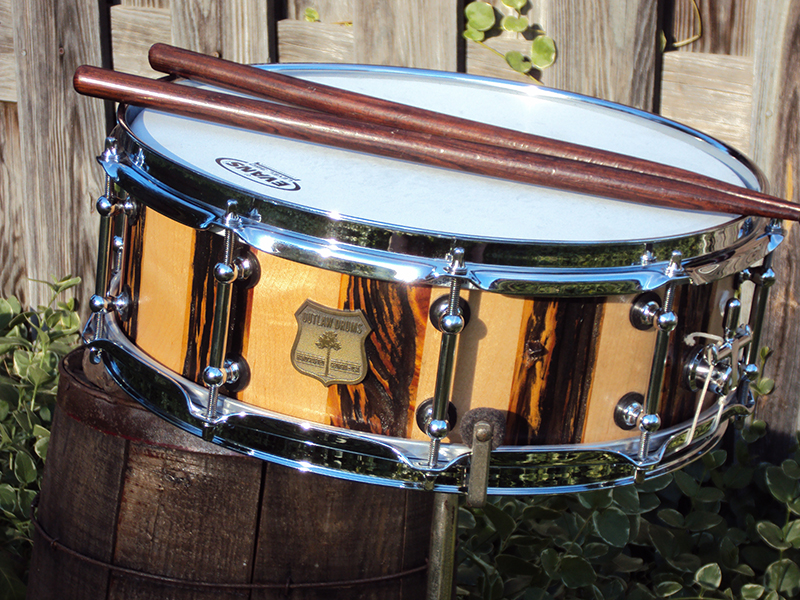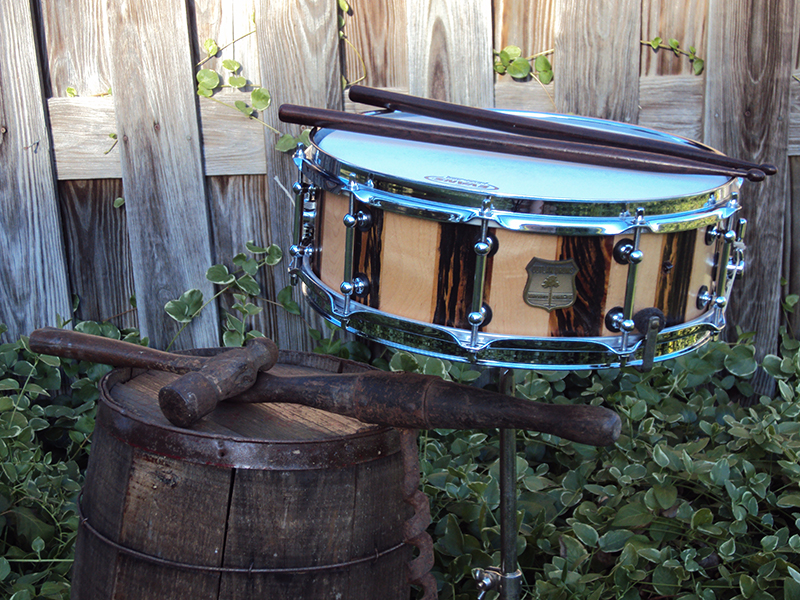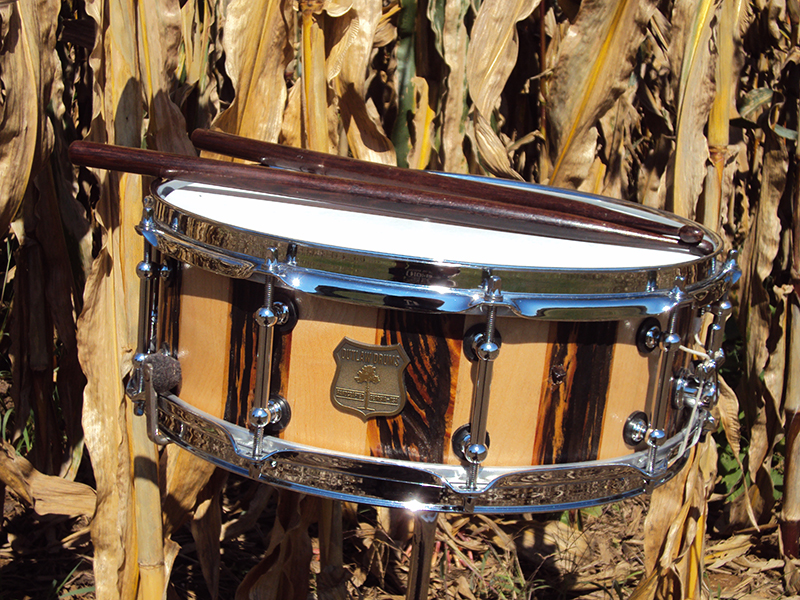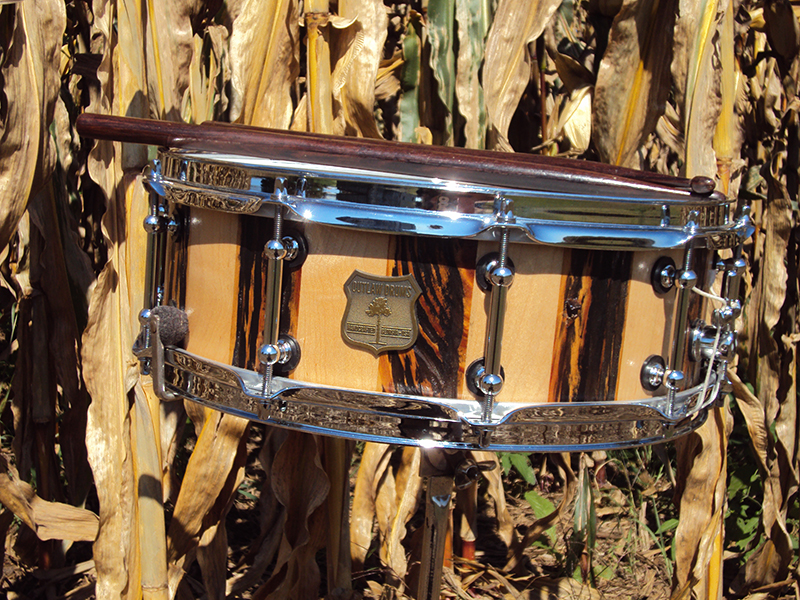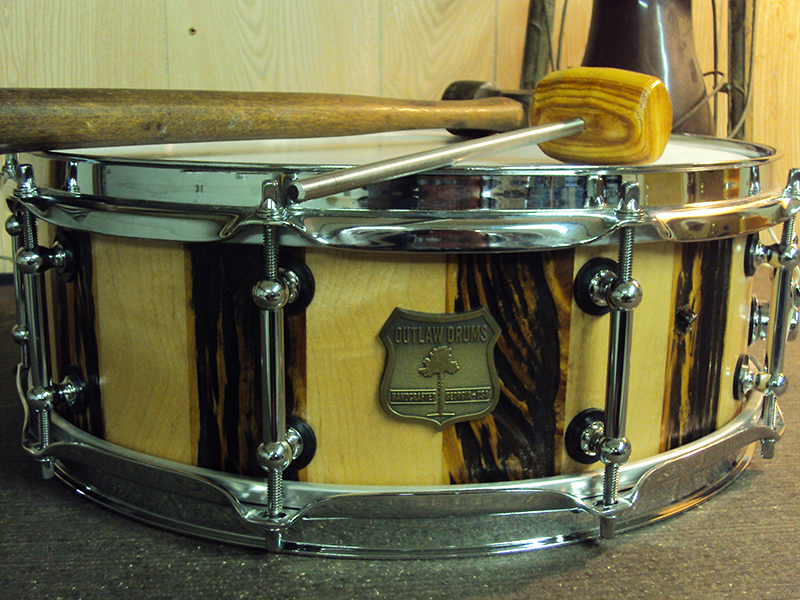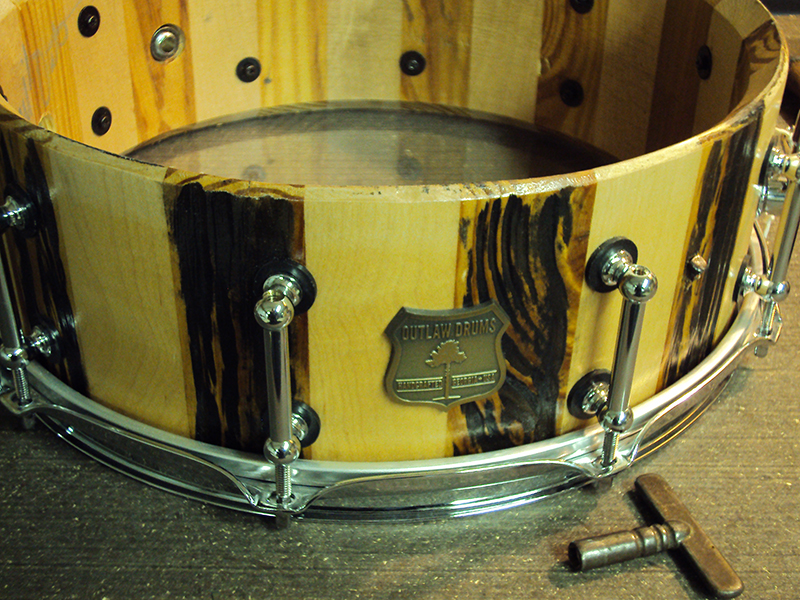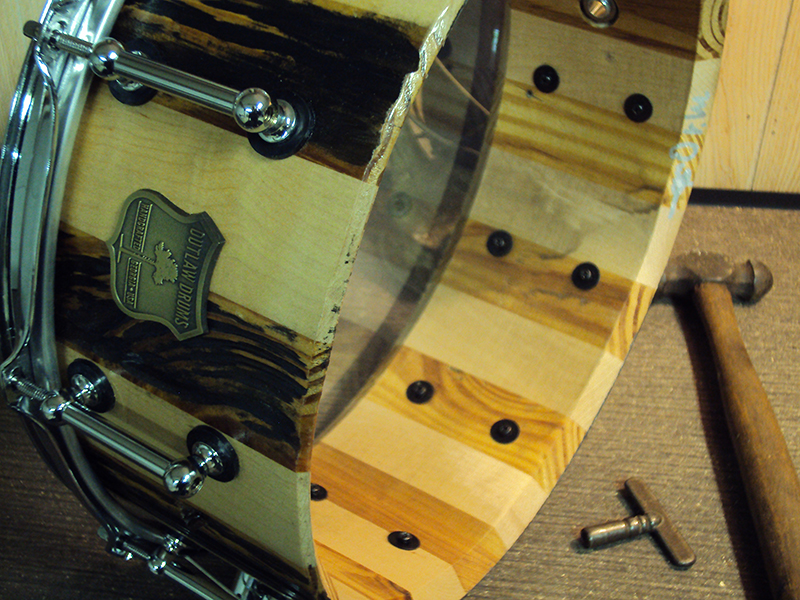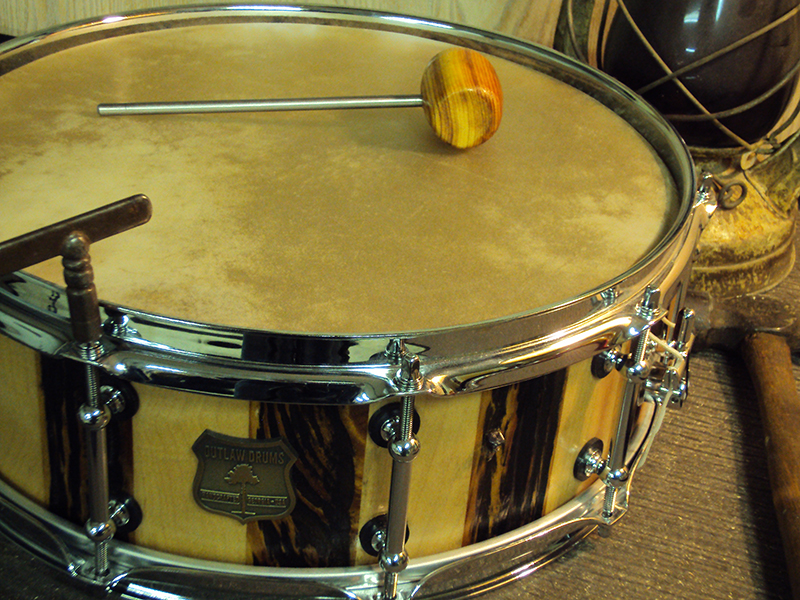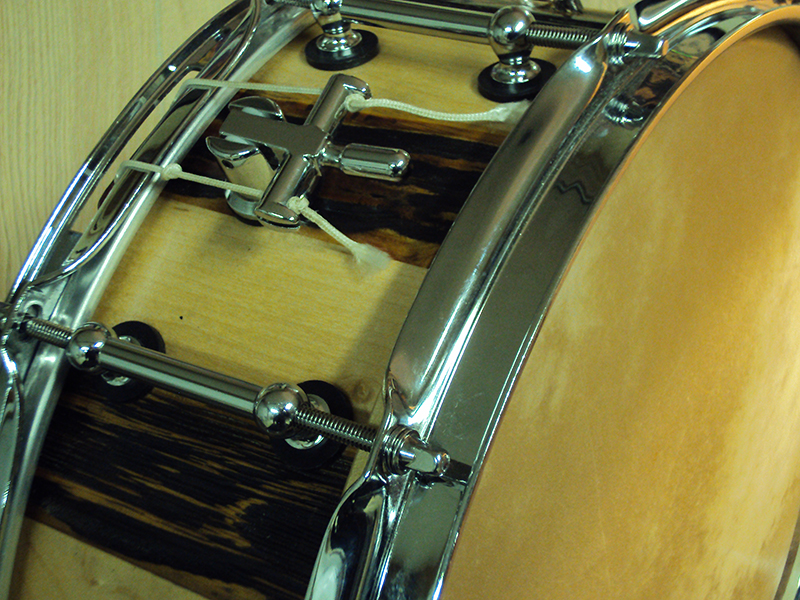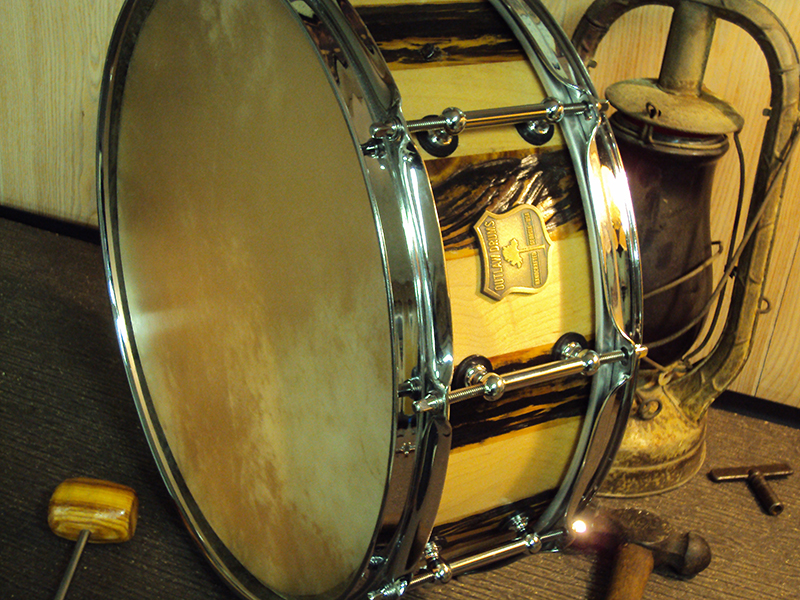Anytime I come across an early American drum, I’m interested. When the drum in question can be somehow identified, I’m really interested. But how often do you come across a drum maker that identifies the origins of his drum making story to a civil war soldier and his house? Now you have my attention. Michael Outlaw attributes the origins of the drums he builds to an old dilapidated building he saw on the verge of being torn down and destroyed back in 2006. Looking for something different to build with, he asked for some of the wood from the house and took a load of it away to his shop.
The wood came from the former home of Charles Edward Wilder, who as a youth in the 1860’s, enlisted in the 17th Georgia (GA) Infantry as a private. A large portion of the 17th GA’s service was as part of Benning’s GA Brigade in Hood’s Division, Longstreet’s Corps, operating in the Army of Northern Virginia. Wilder fought in many of the Civil War’s most notable battles in both the Eastern and Western Theaters. Surviving the War, Wilder received 10 acres near Albany, GA from the State for his service as that was about all that was available to the returning veterans for any means of compensation. The land was rich with virgin long leaf pine trees suitable for building. Charles Wilder built the house from the wood of those trees in the 1880’s; the very same house Michael Outlaw procured wood from to build the first Outlaw Drums well over 100 years later.
Why is the wood so special? Most of it dates back toward the 1600’s. These trees grew at an exceptionally slow rate of growth. They were virgin American trees that typically lived over 300 years and could grow to over 150 feet high. The resin in the wood was thick and the grow rings tight. Harvested from houses, mills, and barns built before 1900, the wood has had plenty of time to age and dry naturally. This results in very special sound quality characteristics that new growth wood just doesn’t seem to have.
Hailing from Sylvester, Georgia, Michael Outlaw, the master wood craftsman behind Outlaw Drums, combines his skills as an accomplished furniture maker with the drummer within him. I’ve found in researching the company that Michael has done a fine job in marketing the brand, so I’ll try not to be too redundant in what he has already made available. His presence on the web is solid and informative. He includes the history, current reviews, process, galleries, sound bites and videos.
I first ran into Outlaw drums at the 2014 Nashville Drum Show. The display was very eye-catching, built to resemble the old shacks the wood for his drums originated from. But it was the drums within the booth that weren't something I could just walk away from. They were beautiful! Something I don’t think I’ve seen before was the textured wood on the outside of the shell. After taking a good look I started tapping. They sounded as good as they looked. By the end of the show, Michael ended up sending a drum and a wooden bass drum beater home with me to review for Not So Modern Drummer Magazine.
The drum I picked was one from the Heart Pine Reborn group; a stave construction combination of new growth maple and old growth heart pine. The shell measures 5”x 14” with 24 half inch thick staves of pine and maple equally alternating. The combination of the two woods made a great sound; lively and solid no matter how I tuned it. It also contained that “thump” I’ve come to love in those old growth, stave constructed drums that makes them sound like much beefier tubs.
The sensitivity and snare response was also incredible. Everything from a hard hitting backbeat to ghost notes came out crystal clear regardless of tuning. Cranking it up brought out very crisp, solid notes. Low-end tuning brought out even fatter sound qualities. Very quiet playing still netted great snare response, again, regardless of the tuning pitch. No matter how hard I hit the drum, I couldn’t get it to choke; performing very well in the big rooms and outside situations. With snares off, the drum has a great sound, full and clean. The lively-ness of the drum without the snares on sounded great with Latin tunes. My personal opinion is that this is a top-notch, all-around “go-to” drum
Since the overall vibe of Outlaw drums tends to pull on the heart-chains of my American history “Jones,” the notion to try a calf skin head naturally came to mind. I generally keep a few mounted skins in my shop that I receive from CT Pro Percussion for just this purpose. The sound of calf skin on this drum was truly exceptional. Very warm and responsive, the drum took on the tone of a much older sounding instrument while remaining quite sensitive and crisp over-all.
This particular model came with chrome plated hardware including triple-flanged hoops, tube lugs, vent grommet, and a George Way “beer tap” throw off by Gibraltar. Top and bottom feature Evans Level 360 heads along with sixteen-strand Puresound snares. The Outlaw Drum badge is solid brass and made to reflect the U.S. Forestry Service badges in honor of the history and repurposing of this native American wood. The bearing edges are a double 45 degree design.
Each Outlaw drum I played had a uniquely individual sound quality. This is in part to the actual lumber used as well as the combinations of wood, dimensions, heads, and hardware selected. Wood choices include, but are not limited to, White Pine, Maple, Oak, Vintage Cypress and Fur, Sapele, Lyptus, Southern Yellow Pine, and of course…..Heart Pine. There is a full and ever-changing selection of wood and hardware finishes also available for your choosing.
Complete stave constructed drum kits are available in a variety of sizes and finishes to match any snare they make. There is also a line of kick drum beaters affectionately known as the “Hammer.” This wooden beater will bring exceptional power and massive thump out of your kick with its incredibly dense wood, each with three angled impact choices.
Michael Outlaw has hit a complete home run as a drum builder, all while managing to bring the history of the wood that has touched countless lives in countless ways back to life in the voice of a drum. From out of the Southland, these drums look good enough to be thought of as fine American furniture. There is even a hand-cut nail still attached in the wood shell from when it was part of a building. Closer inspection of the interior found an old nail hole still present in the old wood. If the history is still with the wood when comes into the shop, there’s good chance it will still be attached when it leaves the Outlaw Drum Shop as a drum. All-in-all….this drum just sounds great!
From Lancaster County, PA…....Thoughts from the shop. Brian Hill

